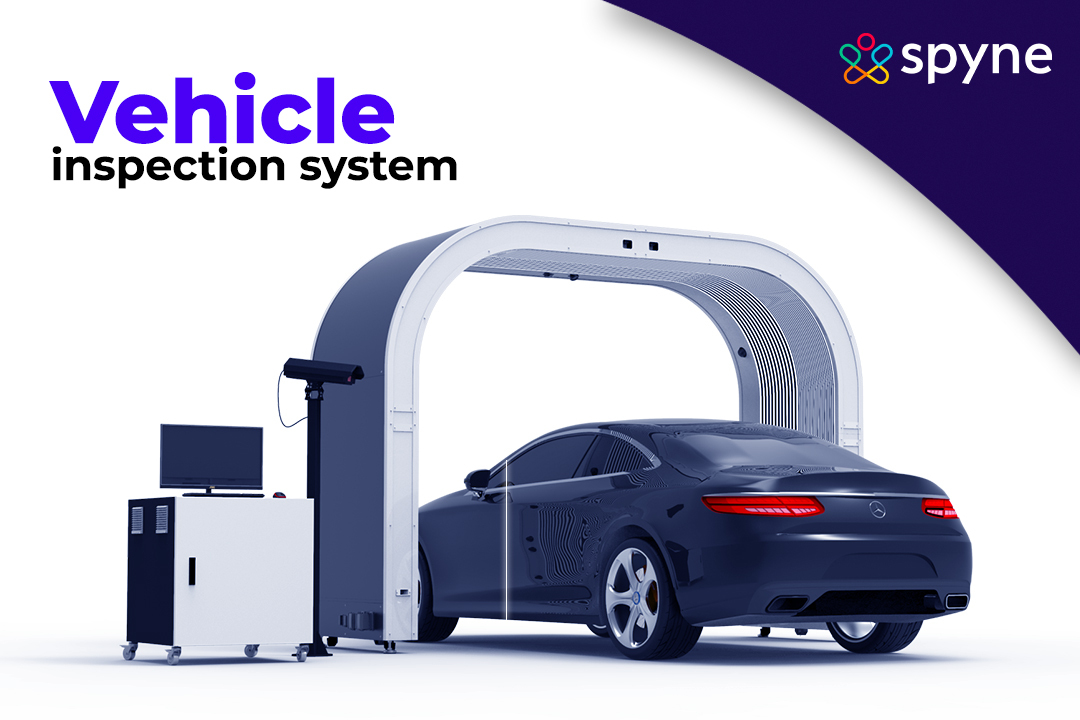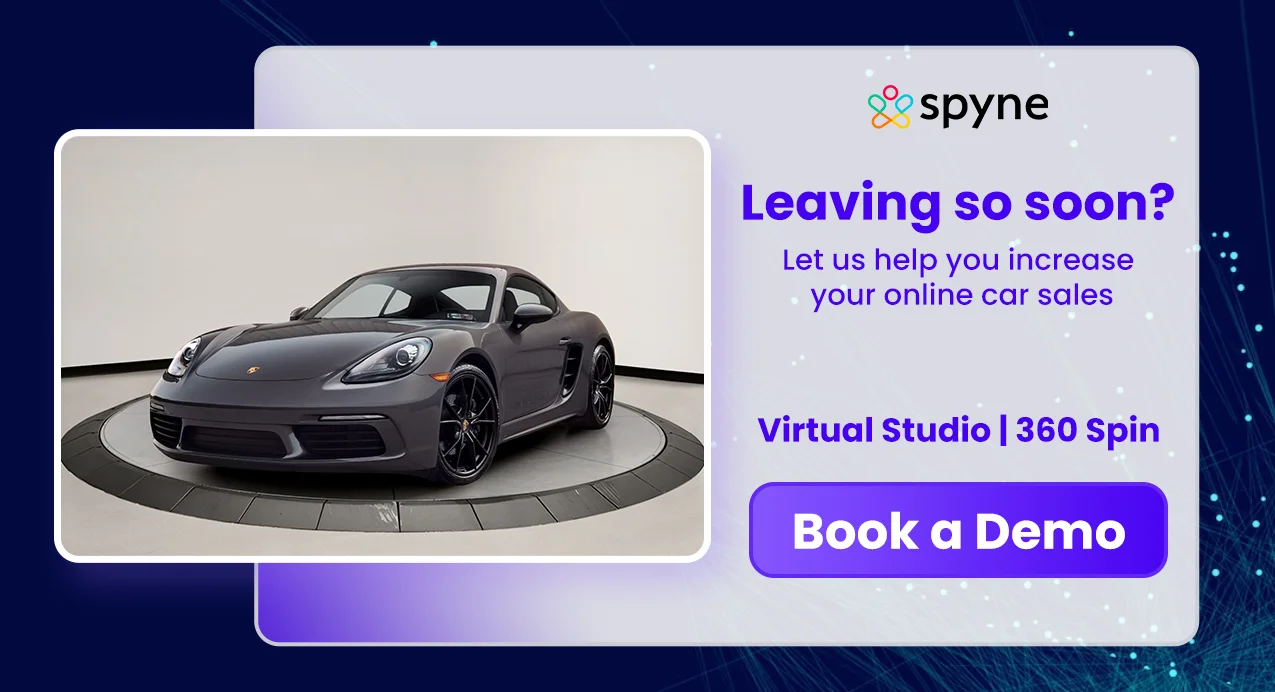AI-driven vehicle inspection systems are redefining how you can assess the health of vehicles and make your vehicle inspections faster and more affordable. Vehicle inspection systems capture imagistic details with precision and give you the ability to perform inspection assessments remotely while on the go. These vehicle inspection solutions have the ability to streamline your inspection workflow and cut costs where needed to ensure seamless operation of your automotive business. Vehicle inspection systems capture imagistic details with precision and give you the ability to perform inspection assessments remotely while on the go.
What are Vehicle Inspection Systems?
Vehicle inspection systems help evaluate vehicles at face value. They also play a crucial role in ensuring road safety. By identifying potential damage and detecting hazards, these systems verify that the vehicles meet legal and regulatory standards.
A vehicle damage inspection system is designed to document a car’s condition using cameras from multiple angles as it enters, goes through services, and exits a facility. Authorized staff can review live or recorded footage to spot damage or safety issues, determining whether these occurred before, during, or after the vehicle’s time at the facility.
This high-resolution technology helps prevent most damage claims, potentially saving businesses thousands of dollars annually. These systems are commonly used in places like car washes, auto service centers, dealerships, parking lots, rental car facilities, valet services, and even military or government operations.

What are the Features of Vehicle Inspection Systems?
The features of vehicle inspection systems typically consist of checking the functionality of brakes, lights, suspension, steering, tires, fluid levels, mirrors, windshield wipers, seatbelts, emissions, battery, and the overall condition of the body with the intent of making a vehicle safe for the road. This data is reported along with a detailed checklist that reports the document findings and other repair needs.
The other broader features of a car inspection system include the following:
1) Automated Vehicle Inspections
Boost your tire and alignment services by instantly assessing crucial alignment angles and tire tread from edge to edge on every vehicle—no manual labor or stops required. This investment can pay off within just a few months!
2) Commercial Vehicle Solutions
Vehicle Inspection Systems detect key causes of tire wear and fuel-inefficient alignment issues on all axles with advanced unmanned inspection lanes and tweak them for heavy-duty and commercial vehicles. This practice of tweaking ensures that vehicles run smoothly and cut down on operational costs through precise diagnostics.
3) Seamless Inspection Integration
Integrate your vehicle inspection equipment with partner services for a streamlined process that manages repairs and boosts profitability. Ideal for passenger vehicles, this system simplifies repair tracking and sales, creating a more efficient workflow for your business.
Top 10 Vehicle Inspection Systems Providers in 2024
AI-powered vehicle inspection systems are transforming the automotive industry by providing automated solutions that are not only fast but also accurate. These advanced platforms offer specialized capabilities from comprehensive damage detection to remote inspections that are helping businesses reduce costs and improve efficiency by streamlining their vehicle management processes.
1) Spyne
Spyne offers an AI-driven vehicle inspection system with comprehensive damage detection. It provides fast 3-minute inspections, 50% lower vehicle inspection systems costs, and a fully digital platform. Spyne integrates seamlessly into business workflows. What differentiates Spyne is its advanced automation which eliminates the need for manual inspections while providing real-time reports that are highly detailed. Unlike others that specialize in specific areas (like VIS with heavy-duty vehicles), Spyne is versatile, catering to a broad range of sectors, including dealerships, rentals, and service centers.
2) VIS
The VIS-Check under vehicle inspection system focuses on undercarriage inspections for heavy-duty vehicles. This automatic under vehicle inspection system provides brake performance tests, road simulations, and checks suspension, steering, and other vehicle systems. It aims to reduce service time and costs.
3) Hunter
Hunter specializes in alignment inspections for both light and heavy-duty vehicles. Their unmanned inspection systems can assess tire and axle conditions in as little time as possible which helps businesses streamline repair processes and boost dealership profitability.
4) UVEye
UVEye provides automated inspection systems using AI and computer vision. The platform that UVEye utilizes can detect issues related to tires, undercarriage, and exterior damage, ensuring fast and accurate reports for fleet and dealership applications.
5) Ravin.ai
Ravin AI leverages standard mobile and CCTV cameras for vehicle inspections. Using AI, their system can detect and report damages, helping businesses in sectors like rentals and insurance to automate inspection processes efficiently.
6) Pave.ai
Pave.ai offers a virtual inspection platform powered by intelligent damage detection. Their system enables anyone with a smartphone to complete guided inspections, making it ideal for quick, remote vehicle condition reporting.
7) Enviro Cams
Enviro Cams provides rugged, high-resolution camera systems designed for harsh environments. Their solutions are suited for industrial vehicle inspections, focusing on durability and reliability in adverse conditions.
8) InspektLabs
InspektLabs uses AI-based software to automate vehicle damage detection and claims processing. Their platform integrates with smartphones, enabling users to conduct inspections remotely and receive instant condition reports.
9) Degould
Degould specializes in automatic imaging and damage detection for vehicle logistics and dealerships. Their systems create 360-degree vehicle scans, ensuring high precision in documenting vehicle condition.
10) ProovStation
ProovStation offers a drive-through, fully automatic vehicle inspection system machine. Using AI and high-resolution imaging, their platform scans vehicles for damage in seconds, providing real-time condition reports for fleet and leasing companies.

How Do Spyne’s Vehicle Inspection Systems Work?
Spyne.ai provides advanced vehicle inspection devices that use deep learning and computer vision. Through computer vision and ML algorithms. Spyne uses its automated vehicle inspection system to scan a vehicle, detect damage and enable faster transactions between vehicles such as rentals, off-lease remarketing, vehicle logistics and transportation. Spyne’s tools compliment each other to create the perfect inspection and reporting process.
Spyne’s Vehicle Inspection System works by incorporating the following steps in its process:
1) Verifying Details of Identification
Before starting the actual inspection process of a vehicle, the system verifies the details of both the vehicle and the owner of the vehicle. These details are important for verification by the insurance carrier or the broker takes down these details when the customer approaches them for inspection. The vehicle details in consideration are the year of manufacture, the VIN number, and the make and model.
2) Preliminary tasks
Before starting analysis of the vehicle, the car is tested to check if it starts and the engine runs without any issues. The odometer reading is also taken note of. These checks and reading are documented for future reference and proof.
3) Inspecting the Vehicle Physically Using AI
The vehicle is physically inspected using AI through image recognition software and computer vision models. A checklist for damage detection is followed that includes the doors, the tires (including the depth of the tread and overall grip), the fenders, tail lights, mirrors and windshield. The interior is also inspected and is also guided by a similar checklist that includes the steering wheel, the gear stick, windows, and even under the hood for leaks or out of place tiny components. The checklist can be modified to be either binary where it detects if the part is broken or not or it could be graded by percentage or some other quantified rating unit based on the severity of damage the component has.
4) Latent Damages
There are damages that cannot be seen by the naked eye or by an external inspection check such as rusting, car part aging and compromised integrity, loose wires, moisture damage etc. This is where the true power of AI vehicle inspection systems comes into play. Spyne’s Vehicle Inspection Systems are adept at detecting these damages and providing a detailed report that encompasses all the defects that the system detects without ever needing to take the car apart component by component to visually inspect and verify these defects.
How Does Spyne Automate Digital Vehicle Inspections?
Combining AI with human oversight, Spyne’s system makes vehicle assessments quicker and more cost-effective. It ensures inspections are objective, consistent, and standardized, even when conducted by individuals with minimal car knowledge.
Spyne’s app streamlines business operations by automating tasks such as providing remarketing photos and uploading listings to remarketing platforms. It also has avehicle condition report app which assigns a condition grade to vehicles, aiding in triage for service or further evaluation. For insurance companies, the system facilitates straight-through processing of minor claims and flags those requiring more detailed review.
The user-friendly app works seamlessly across iOS and Android devices, including tablets, without requiring a download. Users can share it via a one-time link which makes it easy for customers to complete inspections remotely.
In Which Areas Can Spyne’s Vehicle Inspection System Be Utilized?
Spyne’s versatile vehicle inspection system supports a variety of industries. It provides flexibility and precision that makes it valuable across several sectors and helps businesses streamline their inspection processes while reducing costs and improving efficiency.
1) Fleets & Leasing
Fleet managers and leasing companies benefit from Spyne’s ability to assess the condition of the vehicle quickly and reduce the overall downtime. This quick assessment ensures vehicles meet safety and maintenance standards before returning to the road.
2) Remarketing Platforms
Spyne’s system simplifies inspections for remarketing platforms by providing fast, reliable damage detection. This system accurately evaluates vehicles before resale, building trust with buyers and helping to maintain transparent remarketing processes.
3) Insurance Providers
Insurance companies can streamline claims processing by using Spyne’s AI-powered system to verify damages quickly and accurately. This reduces disputes, speeds up claim resolutions, and enhances the customer experience by providing reliable data.
4) Service Centers
Service centers can integrate Spyne’s system to automatically detect issues and document vehicle conditions pre- and post-service. This improves transparency with customers and helps service centers manage repairs more efficiently.
What are the Benefits of Spyne’s Vehicle Inspection Systems?
Spyne’s vehicle inspection system offers numerous advantages, making the inspection process faster, more cost-effective, and highly accurate. Here are some key benefits that can help transform vehicle inspections for businesses of all sizes.
1) Enhanced Damage Detection
Spyne’s system identifies more potential damage than traditional methods using AI car damage detection and ensures an accurate inspection. It does this and also minimizes overlooked issues and avoids unexpected repair costs.
2) Rapid Inspection Process
The system completes a full vehicle inspection in less than 3 minutes which immensely helps streamline the inspection process by significantly reducing downtime for both operators and customers.
3) Reduced Inspection Costs
Spyne’s solution cuts inspection costs by up to 50% which helps businesses maintain high-quality checks while saving operational expenses. This makes Spyne a cost-efficient option for vehicle assessments.
4) Fully Digital Process
Spyne’s 100% digital system eliminates the need for manual paperwork and provides real-time reports with seamless data storage and easy access to vehicle information. This process improves the overall efficiency of the inspection process
Conclusion
Efficiency and accuracy are essential in the automotive industry. AI-powered vehicle inspection systems are revolutionizing vehicle assessments. They transform how we evaluate and maintain vehicle health. Spyne’s platform and other advanced solutions provide robust, cost-effective inspections. These go beyond traditional methods, helping businesses streamline workflows and reduce unexpected expenses. As digital solutions grow in demand, these systems set new standards for automotive inspections. They enable faster processes, greater transparency, and reliable insights. This keeps operations running smoothly.



























